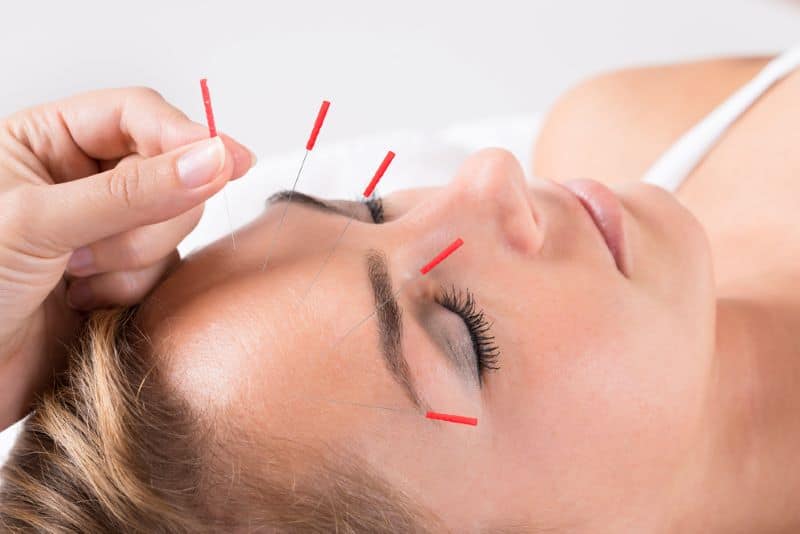Does Medicaid Cover Acupuncture?
The information in this article is current as of March 2, 2022.
Acupuncture is used to treat pain, manage stress, and overall wellness worldwide. Acupuncture stems from Chinese medicine and has become popular in western cultures — over 14 million Americans have tried acupuncture.

With acupuncture becoming more widely used, you may be asking, “Is acupuncture covered by Medicaid?” Unfortunately, only Oregon and Minnesota have included acupuncture as a covered treatment in their Medicaid coverage since 2021. However, there is hope that other states will begin to adopt acupuncture under Medicaid coverage as Medicare has already done.
What Is Acupuncture?
Acupuncture is the process of inserting thin needles through specific points of your skin throughout your body. Most acupuncture treatments include 6-8 sessions. The first session may last up to one hour, while subsequent sessions last around 30 minutes.
Acupuncture is used to help the flow of energy within your body. Western practitioners view acupuncture as an effective method to stimulate nerves, muscles, and tissue to increase the body’s painkilling effects.
What Is Acupuncture Used for?
Acupuncture is used to relieve a health condition or symptom of a condition. Pain is the most common thing acupuncture treats. This pain can be muscular pain or migraine/headache pain.
It’s believed that acupuncture stimulates the nervous system, potentially encouraging the body’s natural healing abilities.
National Institutes of Health have studied acupuncture and found it to be an effective treatment for:
- Nausea caused by surgery or cancer treatments
- Dental pain post-surgery
- Addiction
- Menstrual cramps
- Headaches
- Tennis elbow
- Fibromyalgia
- Myofascial pain
- Osteoarthritis
- Lower back pain
- Carpal tunnel
- Asthma
- And potentially, stroke rehabilitation
See John Hopkins’ list for more conditions that may benefit from acupuncture.
What Happens in an Acupuncture Session?
After insurance approval or paying for your acupuncture session, you will meet with your acupuncturist for an initial examination. Acupuncturists are certified differently in each state. Most are board-certified as licensed acupuncturists or a similar name, and some may double as chiropractors or osteopaths.
Your practitioner will then ask you questions about your condition, symptoms, and lifestyle. They may also physically examine your body, tongue, face color, and pulse. This initial evaluation can last for up to one hour. It may or may not include your first acupuncturing experience.
During your first acupuncturing session, anywhere from 5 to 20 needles will be inserted around your body. These needles are the size of a strand of hair and inserted to various depths. You may feel a bit of discomfort. Some deeper needles may cause you to feel an aching sensation that is normal.
Needles may or may not be moved, twirled, or manipulated by the practitioner. They may also apply heat or mild electric pulses to the needles.
The needles will then remain in place for 10 to 20 minutes before removal. Removal is usually quick and painless.
After a few weeks and sessions, you should start to feel relief or generally better. If the acupuncture does not help, you should not continue the sessions.
What Is Medicaid?
Medicaid is a health insurance coverage assisting over 77 million low-income Americans. This includes single adults, children, pregnant women, the elderly, and those with disabilities. While the federal government funds it, Medicaid is administered state-by-state, so stipulations vary greatly.
Medicaid is not automatically given – you must apply if you are eligible. The requirement is usually expressed as having an income X% below the federal poverty level. States determine the percentage and enrollment fees, premiums, deductibles, copays, or coinsurance policies for their Medicaid program.
What Is Medicare?
Medicare should not be confused with Medicaid. Medicare is another type of federal health insurance for those 65+ and some younger people with disabilities. Some individuals qualify to hold both Medicaid and Medicare at the same time.
Medicare can cover up to 12 acupuncture appointments over 90 days as treatment specifically for chronic lower back pain.
Medicaid-Covered Acupuncture in Oregon
Oregon’s Medicaid program is called the Oregon Health Plan. This insurance covers acupuncture as a treatment for specific medical conditions. Visit the official Oregon Health Plan website for additional coverage information.
It can be used as a treatment for conditions related to:
- Pregnancy
- Depression (post-stroke depression only)
- Scoliosis
- Conditions of the back and spine
- Migraine headaches
- Osteoarthritis in the knee(s)
To receive acupuncture for one of these conditions, you’ll first need a referral from your Primary Care Physician (PCP) stating your qualifying diagnosis. This referral must be submitted to the Oregon Health Plan for approval before the procedure. Once approved, you may complete the number of sessions granted to you through a participating provider.
Medicaid-Covered Acupuncture in Minnesota
Minnesota offers more extensive acupuncture covered by Medicaid under its Medical Assistance (MA) program. The service must be provided by one of the following: a state-certified or recognized acupuncturist, a chiropractor registered under acupuncture, osteopath, and physicians.
MA covers acupuncture for:
- Restless legs syndrome
- Post-traumatic stress disorder
- Smoking cessation
- Depression
- Pregnancy
- Schizophrenia
- Chronic pain
- Acute pain
- Xerostomia (dry mouth) associated with:
- Cancer care
- Sjogren’s syndrome
- Anxiety
- Menstrual disorders
- Post-operative procedures
- Nausea and vomiting associated with:
- Insomnia
- Radiation therapy
MA can cover up to 20 sessions of acupuncture services annually without prior authorization. However, the acupuncturist should have a clear medical record documenting each patient’s medical history, exam, and treatment. These treatments will only be considered medically necessary if the patient shows improvement over time.
MA will not cover acupuncture for:
- Cold or influenza
- Fatigue
- High blood pressure
- Infertility
- Nausea (unless caused by surgery, pregnancy, or cancer care)
- Drug or alcohol dependence
- Allergies or asthma
- Weight loss
- Acne
- Sexual dysfunction
What Does Medicaid Say About Acupuncture?
Since Medicaid is run differently by each state, there is no overlying consensus on whether it should cover acupuncture or not. Medicaid’s mandatory services include:
- Freestanding Birth Center services (only those certified or recognized in the state)
- Rural health clinic services
- Transportation to medical care
- Inpatient hospital services
- Home health services
- Outpatient hospital services
- Physician services
- Family planning services
- Tobacco cessation counseling for pregnant women
- Certified Pediatric and Family Nurse Practitioners
- EPSDT
- Nurse Midwife services
- Laboratory and X-ray services
- Federally qualified health center services
- Nursing Facility Services
Acupuncture is currently not listed under the mandatory federal benefits for Medicaid. However, with its growing use and popularity in America – especially as a pain management system – we hope that acupuncture covered by Medicaid will expand to more states in the future.
Click here for a list of optional Medicaid benefits determined by each state.
What Alternatives Does Medicaid Cover?
While you may prefer acupuncture covered by Medicaid, there are other alternatives you may try under Medicaid to manage chronic pain. Keep in mind each state has different Medicaid policies. Yours may or may not cover the following alternatives:
- Prescribed marijuana
- Chiropractic manipulation
- Therapy for pain associated with depression
- Relaxation therapy
- Prescription pain medication
Free Alternatives to Acupuncture
Acupuncture is a unique approach to pain management. However, financial constraints may make it difficult to access an acupuncturist. If that’s the case, you can try these at-home stress-reduction techniques to help manage pain.
- Yoga: This activity has been linked to decreased back, neck, and arthritis pain levels.
- Exercise: Regular, doctor-approved exercise can help relieve chronic pain while boosting energy levels.
- Supplements and vitamins: Certain supplements have been associated with anti-inflammatory properties that help certain pain types. Some examples are fish oil, capsaicin, and glucosamine.
Always consult with your doctor before trying any at-home alternatives to acupuncture for stress or pain management.
How to Apply for Medicaid
Medicaid approval depends on your income, age, the number of people in your family, and whether you are pregnant or disabled.
First, you must read through your state’s Medicaid requirements to see if you’re eligible. Then, if you meet the requirements, you’ll need to apply through the Health Insurance Marketplace.
The Health Insurance Marketplace was developed under the Affordable Care Act. This website lets you browse health care plans, compare prices, and purchase your health insurance plan.
Create an account on the Marketplace and begin your insurance application. This application will determine if you qualify for an individual insurance plan, Medicaid, or other savings your state offers.
Some states will also allow you to apply for their Medicaid program directly. Contact your state from the list above for more details.
Save Money on Your Wireless Phone Service
If you qualify for a government benefit such as Medicaid, you may also qualify for Lifeline service. Lifeline is a federal benefit program that allows low-income consumers to receive free or heavily discounted communication services. Click here to find out more and apply for this valuable benefit.



